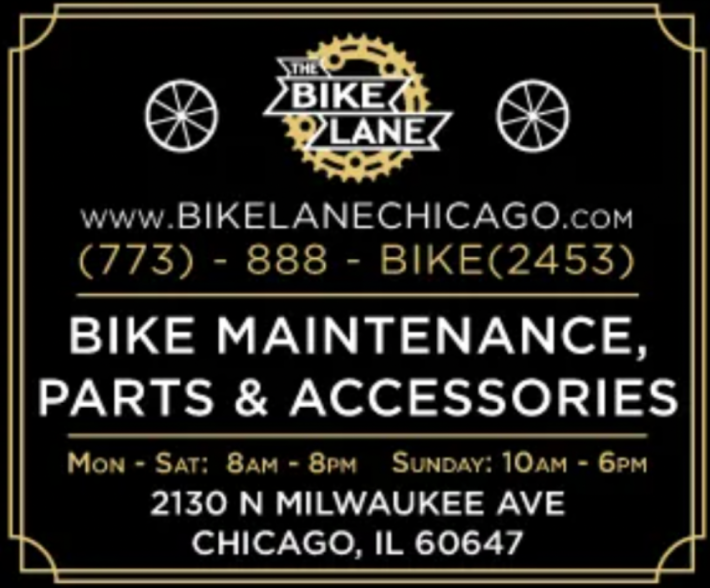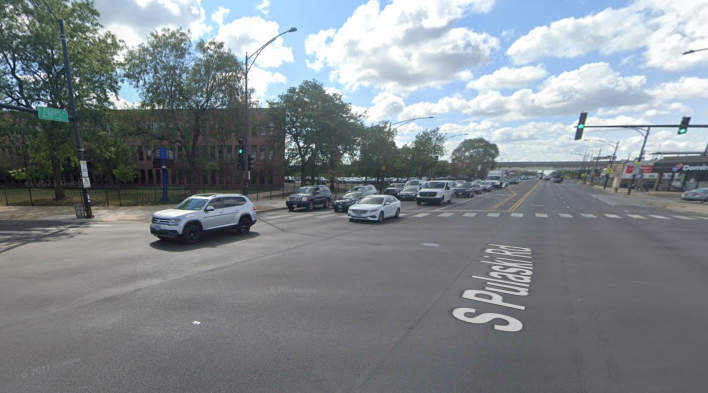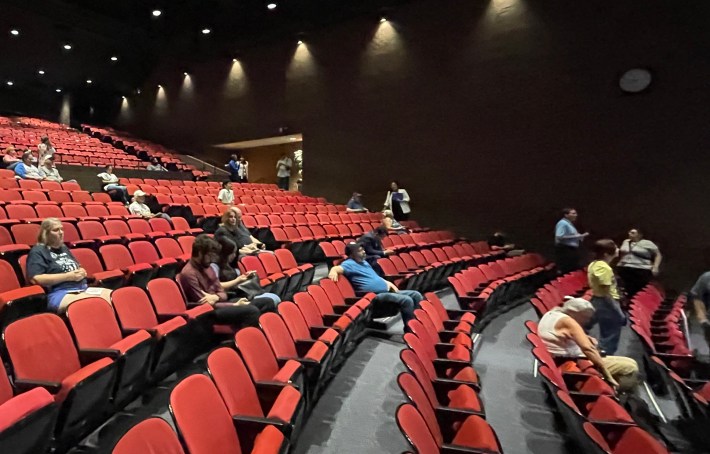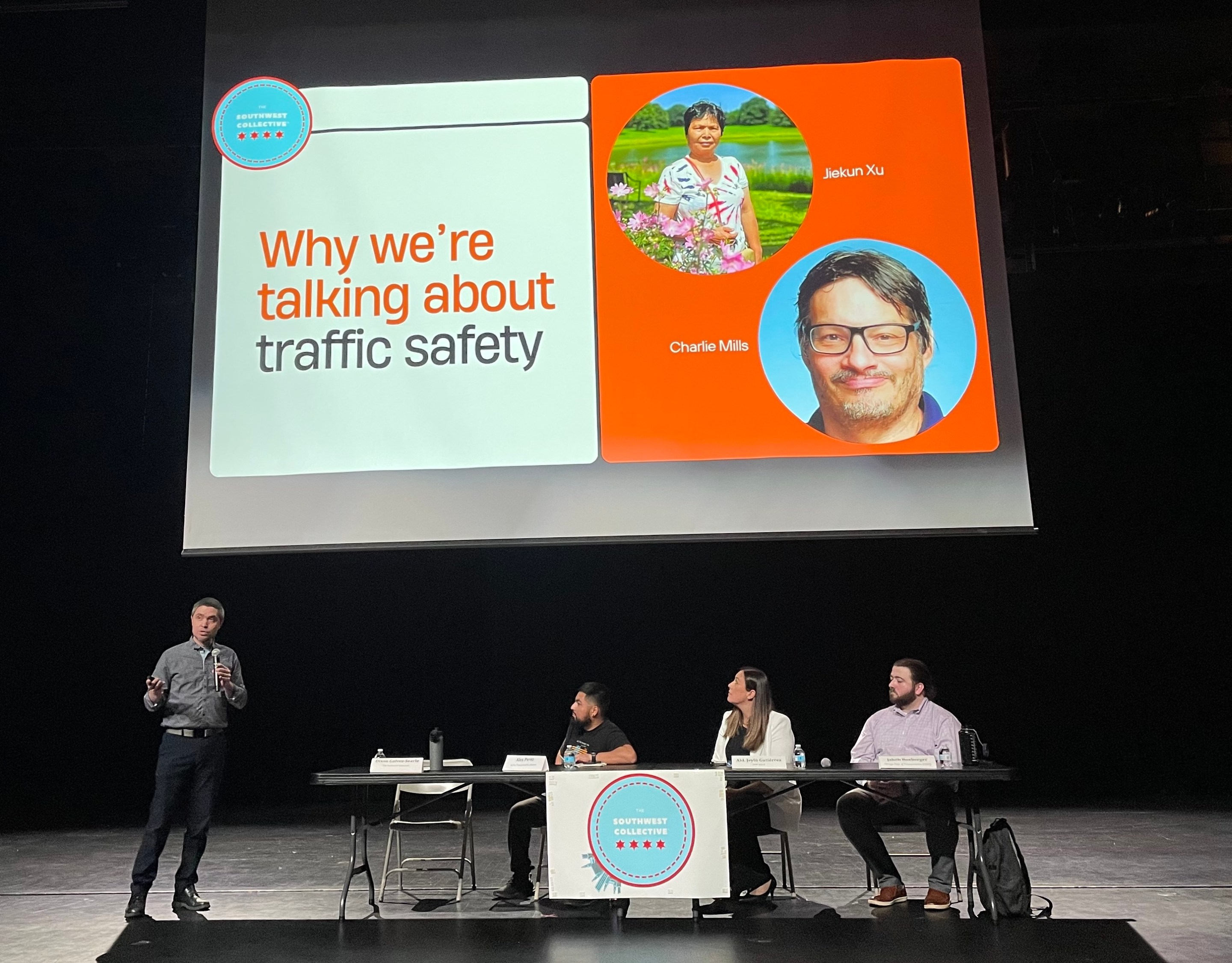
On Tuesday, September 18, the Southwest Collective held a community meeting at Curie Metro High School, 4959 S Archer Ave., to discuss traffic safety issues on Pulaski Road. The panel included SWC Transit Advocacy Steward Dixon Galvez-Searle, local Alderperson Jeylú Gutiérrez (14th), Chicago Department of Transportation Traffic Engineer Jakob Boxberger, and Active Transportation Alliance Advocacy Manager Alex Perez.
"We're here to talk about how to make Pulaski Road safer," said Galvez-Searle at the start of the discussion. "And why are we doing that? Well, we're doing that, sadly, because too many of our neighbors have been killed in crashes along Pulaski earlier this year; in February, our neighbor Jiekun Xu, was killed in a crash near 43rd and Pulaski just crossing the street on foot. A few months later, on Easter night, our neighbor Charlie Mills was killed in West Lawn near 64th and Pulaski, also just crossing the street on foot, something we should all be able to do."
"A lot of people in the community were outraged by this," Galvez-Searle added. We're saddened by this. We're furious at this, and rightfully so, not just because these are tragic incidents in and of themselves, but because we know they're indicative of a larger problem."
He said SWC looked at City of Chicago data since January 1, 2020. During that time, on the roughly four-mile stretch of Pulaski between 71st and 40th streets, there have been 4,231 crashes with 902 injuries. The latter included incapacitating injuries to 80 pedestrians and motorists alike. Two-thirds of those crashes cause over $1,500 each in property damage to cars and buildings. That figure doesn't include medical bills.
"We know that Pulaski was built for cars," Galvez-Searle said. "It's an incredibly wide street. That's why we have so many auto parts stores, parking lots, strip malls. I think many people in the community have been telling us, and I know from living here, that we feel compelled to drive often for safety reasons. We don't want to go out and walk, even if it's a couple of blocks because we feel like crossing Pulaski is not safe... There are multiple car dealers and multiple mechanics. So this is the business and interest we have because we have built Pulaski for cars."

Since a hit-and-run driver fatally struck Jiekun Xu, 68, last February at 44th Street and Pulaski in the Archer Heights neighborhood, the community has responded in various ways. Ald. Gutiérrez held community meetings, elected officials have demanded action from the Illinois Department of Transportation, and CDOT started implementing safety improvements.
CDOT's Boxberger talked about some of the safety improvements the organization has made to Pulaski in recent months. "We started with striping out parking lane lines, improving crosswalk visibility, refreshing all that's right around the corridor," he said. "I know that may not seem like a huge improvement, But what it does is it visually narrows the road and makes drivers more aware of where there are crossings, where there should be driving, where they not should be driving, which includes a median. Refreshing medians is critical."
Next Boxberger discussed "rapid deployment improvements." "Those include striping, bollards, and different kind of flexible delineators that we like to bolt into the concrete. Those are the next phases that we started in a few locations, and we have identified quite a few intersections for later this fall."
SWC worked with ATA to create an online survey about Pulaski. 472 people took the survey, and almost all of them said speeding is their number one safety concern on the road. Other major concerns included truck traffic, and having sufficient walk signal time to cross the street. Respondents were particularly concerned about crossing Pulaski at 63rd Street, Archer Avenue, and 47th Street.
Next year CDOT will install concrete pedestrian islands and sidewalk extension to make walking safer, and pilot infrastructure to discourage drag racing on Pulaski, such as bollards and plastic bumps, Boxberger said.

Attendees also expressed interest in installing concrete "bus bulbs" that allow the operators to pick up passengers without pulling to the curb, which shortens transit trips. ATA's Alex Perez also voiced support for creating bus-only lanes on Pulaski, since improving transit would mean less driving on on the road.
"Bus rapid transit, is one of the big things we'd like to see in 10 years," said Perez. "That could be a big transformation, where we currently have three or more lanes on each side for Pulaski, so maybe we could... use them for public transit.
Perez also suggested lengthening walk signal times in conjunction with higher public transportation use. "Tree planting is another great way to just make it more inviting on the street because right now it's pretty much just concrete and speeding cars next to you."
Ald. Gutiérrez noted that these improvement are important for Curie and other area schools because they will make it safer for student get to school without being driven there. "[Parents will] be able to be okay with their kids walking in the morning."

Did you appreciate this post? Please consider making a tax-deductible donation, to help keep Streetsblog Chicago's sustainable transportation news and advocacy articles paywall-free.






